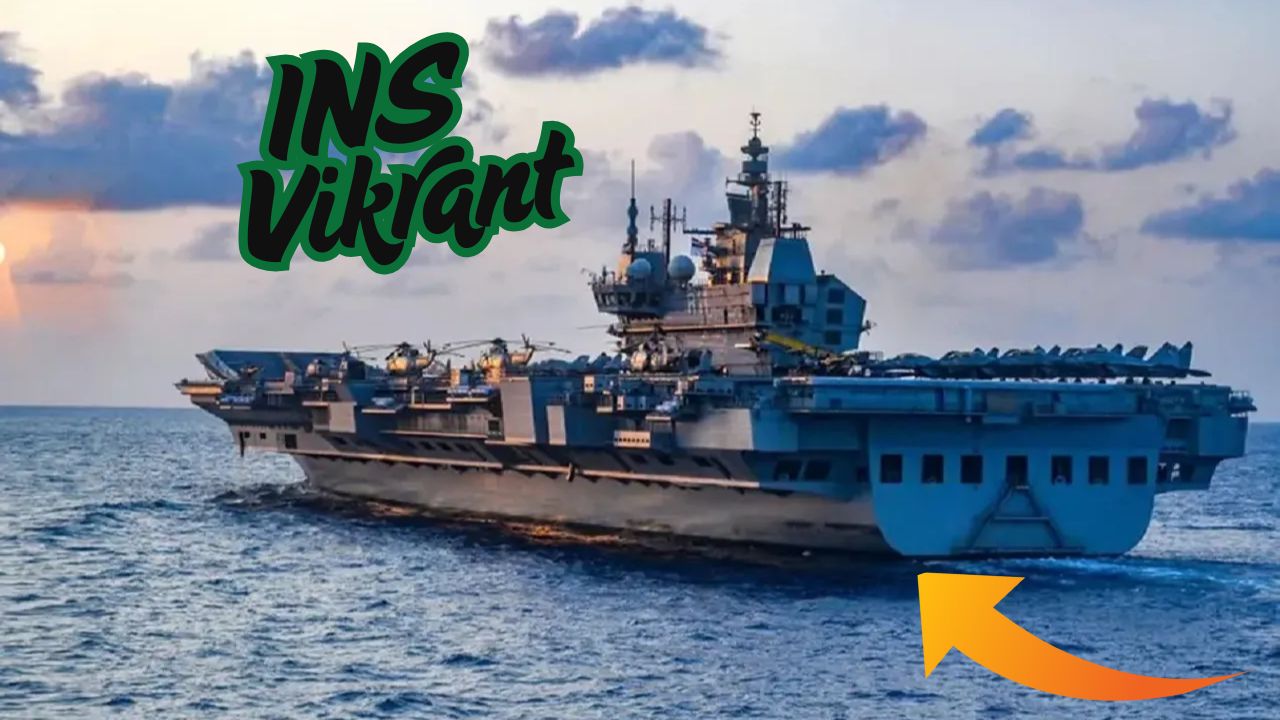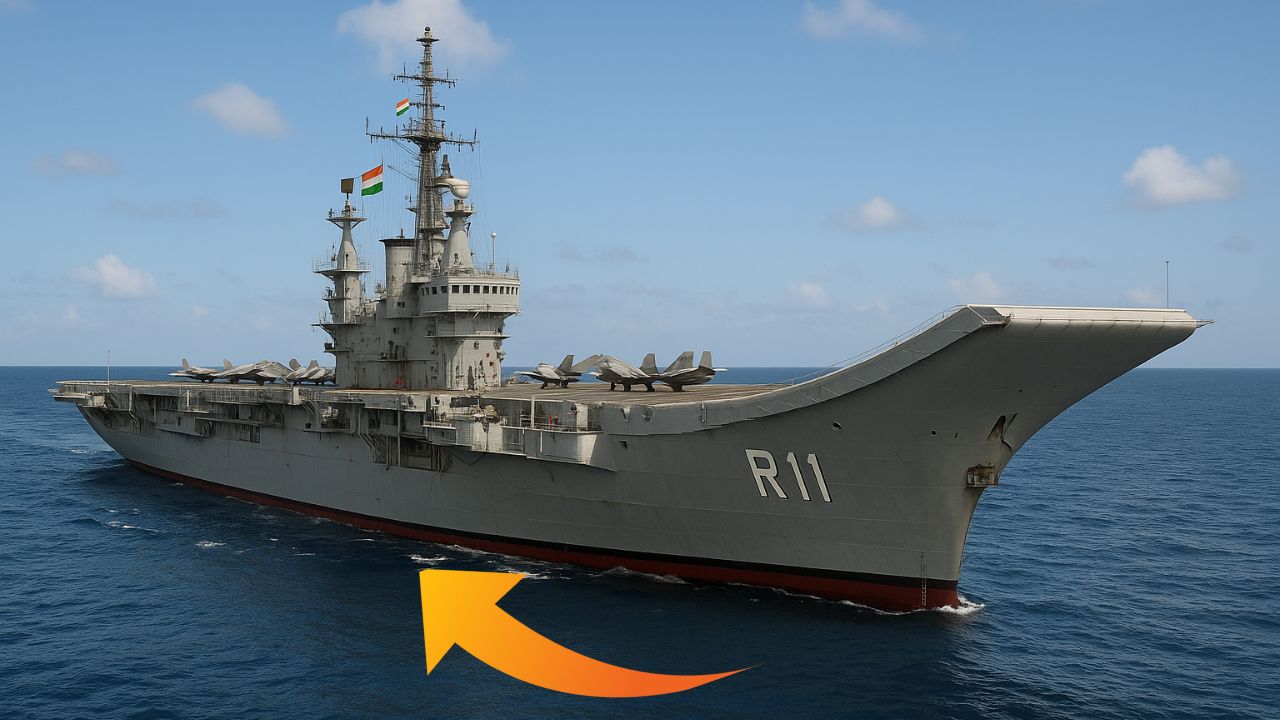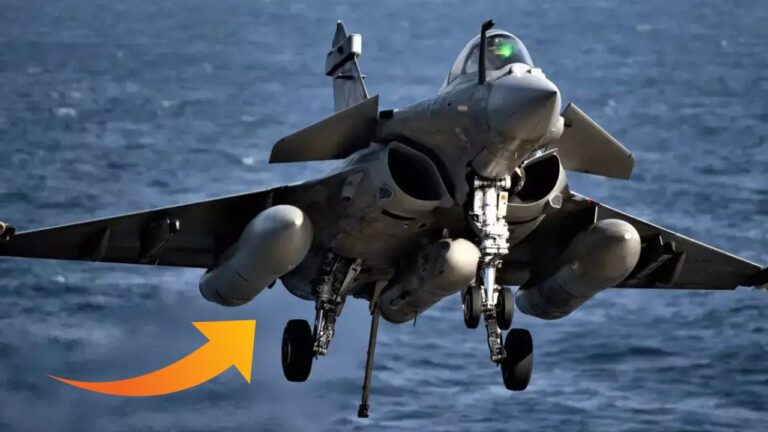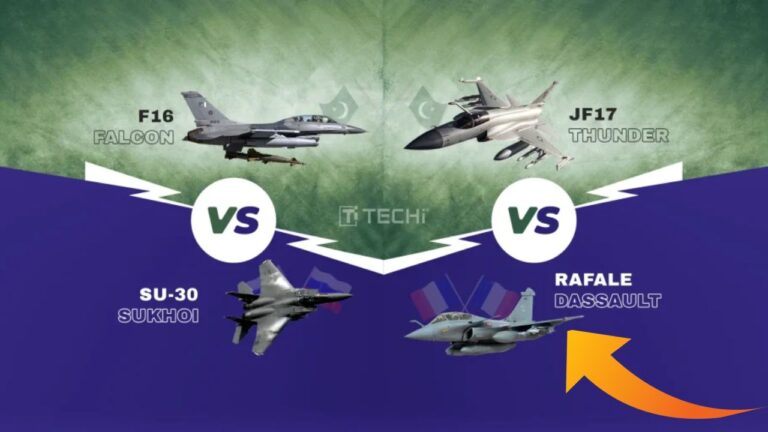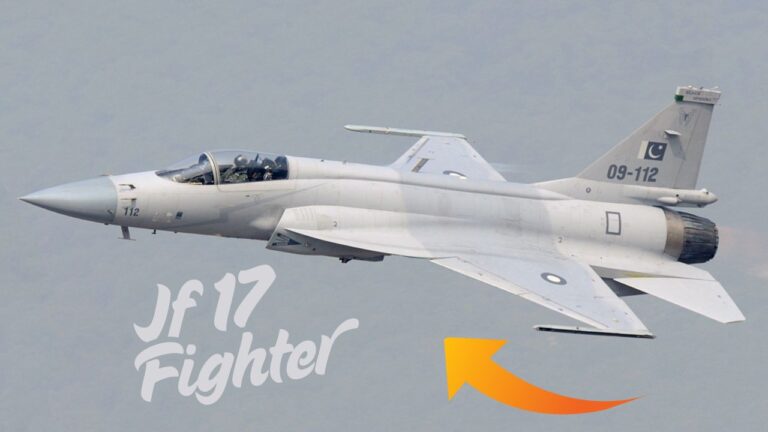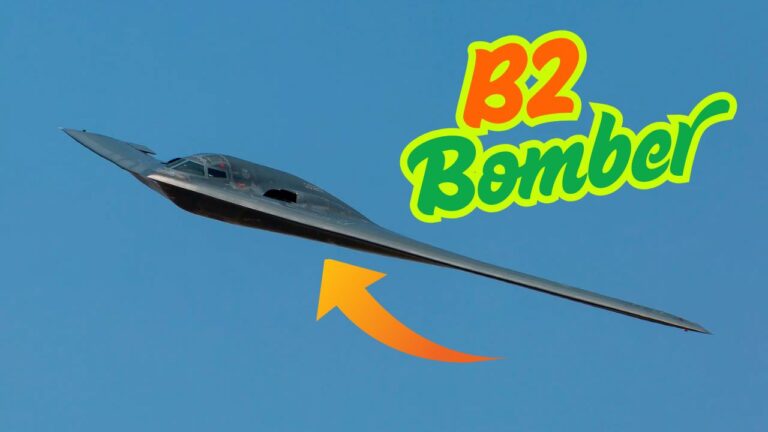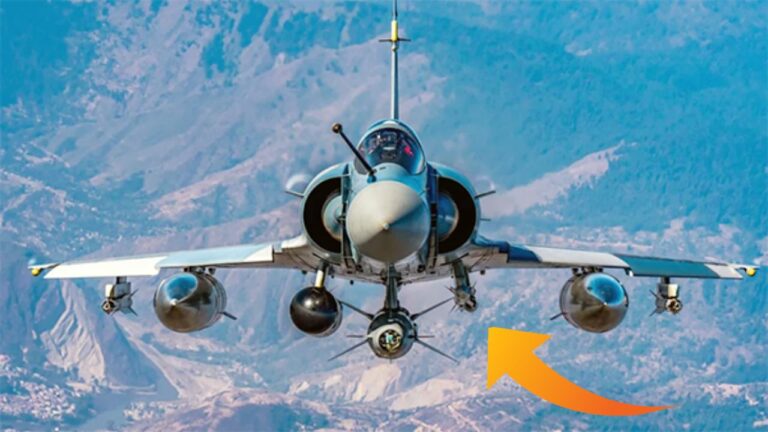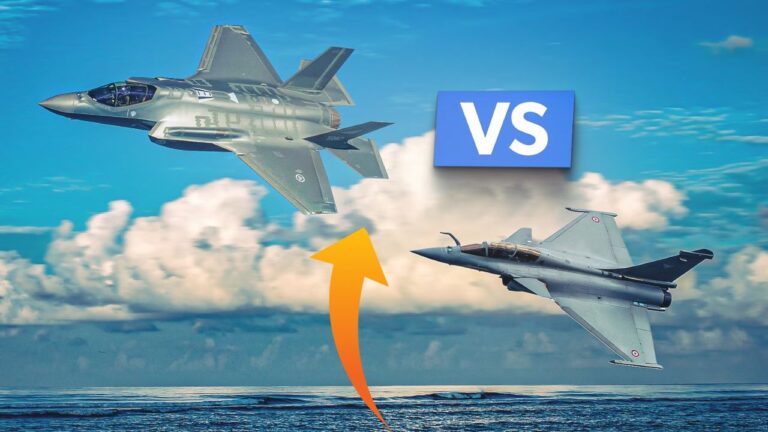INS Vikrant Price in India, Specifications and Characteristics
INS Vikrant is India’s first indigenously built aircraft carrier. It is a symbol of the nation’s growing naval strength. Commissioned in 2022, it cost approximately ₹20,000 crore (around $2.5 billion). With a displacement of 45,000 tons, the carrier spans 262 meters in length and features a ski-jump ramp for aircraft operations.
Powered by four General Electric LM2500+ gas turbines, it reaches speeds of 28 knots. The carrier can accommodate 30 aircraft, including MiG-29K fighters and Kamov helicopters. Its advanced air defense systems and long-range radar enhance combat readiness.
INS Vikrant strengthens India’s blue-water navy capabilities, ensuring maritime security and power projection. Built by Cochin Shipyard Limited, it showcases India’s self-reliance in defense technology. This warship is a testament to India’s ambition to become a dominant naval force in the Indo-Pacific region.
INS Vikrant Price in India
The INS Vikrant was constructed at an estimated cost of ₹20,000 crore (around $2.5 billion). This includes the design, construction, and integration of advanced systems.
Read More: 1 Rafale Price in Indian Rupees, Top-Sped, Specs and More
Characteristics
-
Indigenous Design & Construction
-
First aircraft carrier designed and built entirely in India (by Cochin Shipyard Ltd)
-
76% of components sourced domestically
-
Showcases India’s warship-building capabilities
-
-
STOBAR Configuration
-
Features a ski-jump ramp for aircraft takeoff
-
Arrested recovery system for landing
-
Can operate fixed-wing aircraft without catapults
-
-
Modular Construction
-
Built using advanced modular construction techniques
-
874 separate blocks assembled together
-
Reduced construction time and improved quality control
-
-
Advanced Defense Systems
-
IAI EL/M-2248 MF-STAR multi-function radar
-
Barak 8 long-range surface-to-air missiles
-
AK-630 close-in weapon systems for point defense
-
-
Aircraft Operations
-
Capacity for 30+ aircraft including:
-
MiG-29K fighters
-
Kamov Ka-31 AEW helicopters
-
MH-60R multi-role helicopters
-
HAL Tejas Navy (future deployment)
-
-
-
Propulsion & Mobility
-
Combined Gas and Gas (COGAG) propulsion
-
Four General Electric LM2500+ gas turbines
-
Maximum speed of 28 knots (52 km/h)
-
Range of 7,500 nautical miles at cruising speed
-
-
Survivability Features
-
Redundant power systems
-
Damage control systems
-
NBC (Nuclear, Biological, Chemical) protection
-
Advanced firefighting systems
-
-
Command & Control
-
Modern combat management system
-
Network-centric warfare capabilities
-
Can serve as flagship for naval task forces
-
-
Human Engineering
-
Accommodates 1,600 personnel
-
Modern living quarters and facilities
-
Gender-sensitive design (can accommodate women officers)
-
-
Strategic Significance
-
Enhances India’s power projection capabilities
-
Provides sea control in Indian Ocean Region
-
Symbol of India’s growing naval prowess
-
Read More: Jf 16 Fighter Jet Price in Rupees, Top-speed, Specifications and Characteristics
Specs
| Category | Specifications |
|---|---|
| Name | INS Vikrant (IAC-1) |
| Type | Aircraft Carrier |
| Country | India |
| Builder | Cochin Shipyard Limited (CSL) |
| Commissioned | September 2, 2022 |
| Cost | ₹20,000 crore (~$2.5 billion) |
| Displacement | 45,000 tons (full load) |
| Length | 262 meters (860 ft) |
| Beam (Width) | 62 meters (203 ft) |
| Draft | 8.4 meters (27.6 ft) |
| Propulsion | 4 × General Electric LM2500+ gas turbines |
| Speed | 28 knots (52 km/h) |
| Range | 7,500 nautical miles (~13,900 km) |
| Crew | 1,600 (including air crew) |
| Aircraft Capacity | 30+ (MiG-29K, Kamov-31, MH-60R, HAL Tejas Navy) |
| Aviation Facilities | STOBAR (Short Take-Off But Arrested Recovery) with ski-jump ramp |
| Armament | 4 × AK-630 CIWS, Barak 8 SAM (planned) |
| Radar & Systems | IAI EL/M-2248 MF-STAR, BEL HUMSA-NG sonar |
| Operational Role | Power projection, maritime security, anti-submarine warfare |
Alternatives
| Specification | INS Vikrant (India) | Charles de Gaulle (France) | HMS Queen Elizabeth (UK) | Liaoning (China) | USS Gerald R. Ford (USA) |
|---|---|---|---|---|---|
| Type | STOBAR | CATOBAR (Nuclear) | STOVL | STOBAR | CATOBAR (Nuclear) |
| Displacement | 45,000 tons | 42,500 tons | 65,000 tons | 60,000 tons | 100,000+ tons |
| Length | 262 m | 261.5 m | 280 m | 304.5 m | 337 m |
| Propulsion | Gas Turbine | Nuclear (2 × K15 reactors) | Integrated Electric & Gas | Steam Turbine | Nuclear (2 × A1B reactors) |
| Speed | 28 knots | 27 knots | 25+ knots | 29 knots | 30+ knots |
| Aircraft Capacity | 30+ | 40+ | 50+ (F-35Bs) | 40+ | 75+ |
| Key Aircraft | MiG-29K, Tejas Navy | Rafale M, E-2C Hawkeye | F-35B Lightning II | J-15, Z-18 | F/A-18E, F-35C, E-2D |
| Defense Systems | AK-630 CIWS, Barak 8 | Aster 15/30, Mistral SAM | Phalanx CIWS, CAMM SAM | HHQ-10, CIWS | RIM-162 ESSM, Phalanx |
| Operational Status | Active (2022) | Active (2001) | Active (2017) | Active (2012) | Active (2017) |
| Cost | ~$2.5 billion | ~$4 billion | ~$4.1 billion | ~$1.2 billion* | ~$13 billion |
FAQs
1. What is INS Vikrant?
INS Vikrant (IAC-1) is India’s first indigenously built aircraft carrier, commissioned in 2022. It strengthens India’s naval power and showcases domestic defense manufacturing.
2. How much did INS Vikrant cost?
The total cost was ₹20,000 crore (~$2.5 billion), including R&D, construction, and systems integration.
3. Why is it called “Vikrant”?
The name honors India’s first aircraft carrier (1961–1997), which played a key role in the 1971 Indo-Pak War.
4. What are INS Vikrant’s key features?
-
45,000-ton displacement, 262-meter length.
-
STOBAR (Ski-jump takeoff, arrested landing).
-
Carries 30+ aircraft (MiG-29K, Tejas Navy, helicopters).
-
Indigenous construction (Cochin Shipyard).
5. How does it compare to China’s Liaoning?
-
Both are STOBAR carriers, but Vikrant is smaller (45K vs. 60K tons).
-
Vikrant has newer tech (Israeli radar, Barak 8 missiles).
-
Liaoning is a refitted Soviet-era carrier.
6. Can INS Vikrant launch fighter jets like the Rafale?
No, it supports STOBAR operations (MiG-29K, Tejas). For Rafale M, India would need a CATOBAR carrier (like France’s Charles de Gaulle).
7. What is its role in the Indian Navy?
-
Power projection in Indo-Pacific.
-
Maritime security against China/Pakistan.
-
Disaster relief & humanitarian missions.
8. Is India building more carriers?
Yes, INS Vishal (IAC-2), a 65,000-ton CATOBAR carrier, is planned (possibly nuclear-powered).
9. How does Vikrant boost “Make in India”?
-
76% indigenous content (design, steel, systems).
-
Reduces reliance on foreign carriers (like Russia’s INS Vikramaditya).
10. Can Vikrant operate drones?
Yes, it can deploy naval UAVs like the DRDO Ghatak in the future.
Conclusion
INS Vikrant marks a historic achievement for India, showcasing the nation’s growing indigenous defense capabilities and commitment to self-reliance under the “Make in India” initiative. As the first domestically built aircraft carrier, it strengthens India’s position as a blue-water navy, capable of power projection and maritime security in the Indo-Pacific.
While smaller than US supercarriers, Vikrant’s STOBAR design, advanced radar systems, and air wing make it a formidable asset against regional rivals like China and Pakistan. Its construction at Cochin Shipyard demonstrates India’s ability to design and build complex warships, reducing dependence on foreign suppliers.
Looking ahead, Vikrant paves the way for future carriers like INS Vishal (IAC-2), which may feature CATOBAR and nuclear propulsion. By combining strategic reach with indigenous innovation, Vikrant symbolizes India’s rise as a maritime power and a key player in global naval security.

